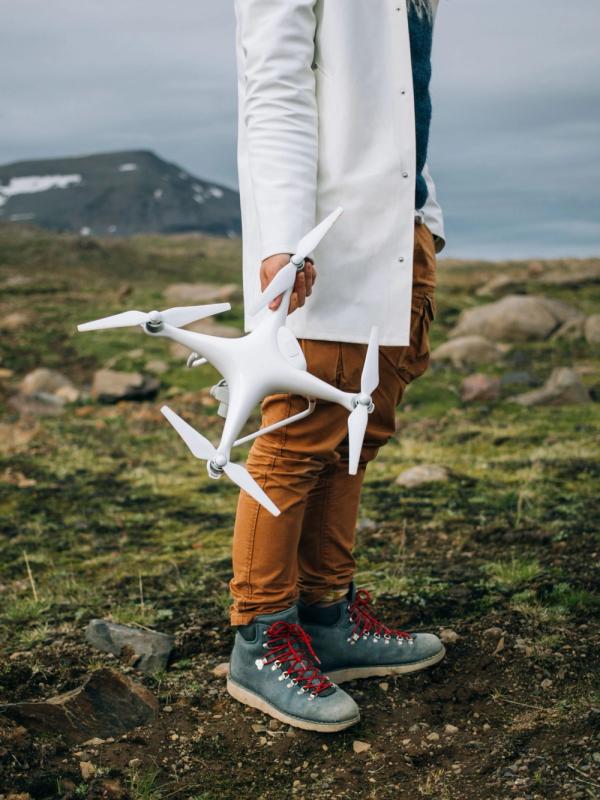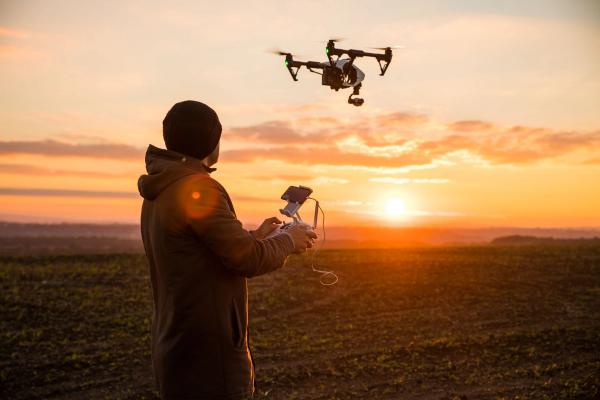
Drone Enthusiast's Guide: Understanding Iceland's Drone Laws
Drones are popular, yet controversial, flying robots that can be used for travel blogging, videography, and capturing memories. Whether you love them or hate them, you can’t argue that they provide some jaw-dropping footage of surrounding scenery. So can you bring them to Iceland? We will discuss why they are or are not allowed here. As well as some of the current laws that are in place. Keep reading to learn all about this technology that has earned a spot in most adventurer’s carryon's.
Why Drones?
The first drone was created in 1935 by Abraham Karem for ariel target practice. Today, there are over 1,256,336 recreational drone owners in the whole world. Their cost can range from $300-$500 for basic models. A decently expensive hobby that has taken the world by storm.
Let’s start by talking about why drones have become common over the past decade. Do you know those travel blogger videos that you follow? The ones that give you a birds-eye view of mountains, oceans, and vast landscapes. Most of the time, those are shot with a drone. Making it a must-have item for any traveler who wants to capture the beauty of the place they are at.

They are also loved by solo travelers. Drones allow them to get their dream travel pictures and videos without having to find someone to take them. While tripods and set timers are frequently used options for solo pics, drones provide a new outlook. Get that picture of you in the middle of a forest with a break in the trees. Or standing out on a remote sandy beach.
In Iceland, you can get unique footage of black sand beaches, cascading waterfalls, and vibrant green landscapes. If you are lucky enough, you can even film the vibrant northern lights in the winter sky. It all just depends on where and how you do it.

Drone Laws In Iceland
So can you capture one of these dream shots of Iceland with a drone? The short answer is yes and also, no. Drones are allowed in most places in Iceland. They are also completely prohibited in others. Let’s break down where you can and cannot go and what laws you need to follow.

According to Iceland’s national aviation authority, the Icelandic Transport Authority (ITA states that flying a drone is legal in Iceland. Iceland does follow the European Union drone law. This means they have to follow the laws that are in place by the European Union Aviation Safety Agency all time. In addition to that, Iceland has its own country laws for drones too.
There is an extensive list of drone laws that you need to follow in Iceland. We will go over some of the top ones. As well as providing you a list of all of them.
“Do not fly over 120 meters (394 feet) above the ground or sea.” There are a lot of high places in Iceland which is why this law is put in place. This includes the top of some waterfalls, mountain peaks, and volcanos.
“Do not fly within 2 kilometers (1.24 miles) of any international airports.” and “Do not fly within 1.5 kilometers (0.93 miles) of any other airports.” Have you ever heard of a bird strike taking down planes? Well, that can also happen with a drone. This in addition to causing issues with the airspace for both pilots and air traffic control. At an airport near London, England, Gatwick Airport, had to cancel hundreds of its flights in 2018 following reports of drone sightings. So do yourself a legal favor, do not try to fly around any airports in Iceland.
“The drone will not be operated directly over people unless it has a class identification label or is lighter than 250g.” A common-sense law, nobody wants a user error that threatens the life of the people below the drone. Even though you may think you are in a super remote location, backpackers or hikers could be near you too. Be respectful of the people around you if you are in a crowded area.
Speaking of drone weight, there are a few different laws that cover that. “When flying in urban areas the drone must weigh 3 kilograms or 6.61 pounds, or less.”. The weight rule in rural areas is the following, “When flying in rural areas the drone must weigh 25 kilograms (55 pounds) or less.” “Drones weighing 20 kilograms (44 pounds) or more must be insured.” Drones can be heavy, imagine how bad that would hurt if it fell out of the sky. In addition to people, there are wild animals throughout Iceland that this could affect.

“The remote pilot will maintain a visual line of sight (VLOS) of the remote pilot and will be assisted by a UA observer.” and “Drone pilots must maintain a direct visual line of sight with their drone while flying.” Iceland has a lot of birds in the sky and people exploring the mountains. It is important to know where your drone is during a flight.
“The drone will not carry any dangerous goods and will not drop any material.” This may be obvious, but do not put anything crazy on your drone, please. Let’s keep it simple when flying it in Iceland.
“All drones must be marked with the pilots’ name, address, & phone number.” This is a great law because it can hold remote pilots accountable. Just know if your drone is breaking a law and falls, they will know where to find you. If you are following the laws and lose your drone, this is a great way for someone to get it back to you! It is a win-win for everyone.
We know Iceland is drop-dead gorgeous and we still want you to get your bucket list drone shot. Luckily this is still doable in most of the country. Just remember to be respectful and mindful of where you are flying. For the most up-to-date drone laws in Iceland visit UAV Coach. They are an FAA-approved Test Administrator of The Recreational UAS Safety Test (TRUST).

Conclusion
Fly Your Drone Safely and Responsibly in Iceland"
In conclusion, Iceland is a stunning and unique destination for drone enthusiasts, but it's important to follow the regulations set by the Icelandic Transport Authority and the Civil Aviation Authority in order to ensure safe and responsible drone operation. Familiarize yourself with the regulations, respect the country's environment and wildlife, and be mindful of the weather conditions, and you'll be able to enjoy flying your drone in Iceland without any issues.
